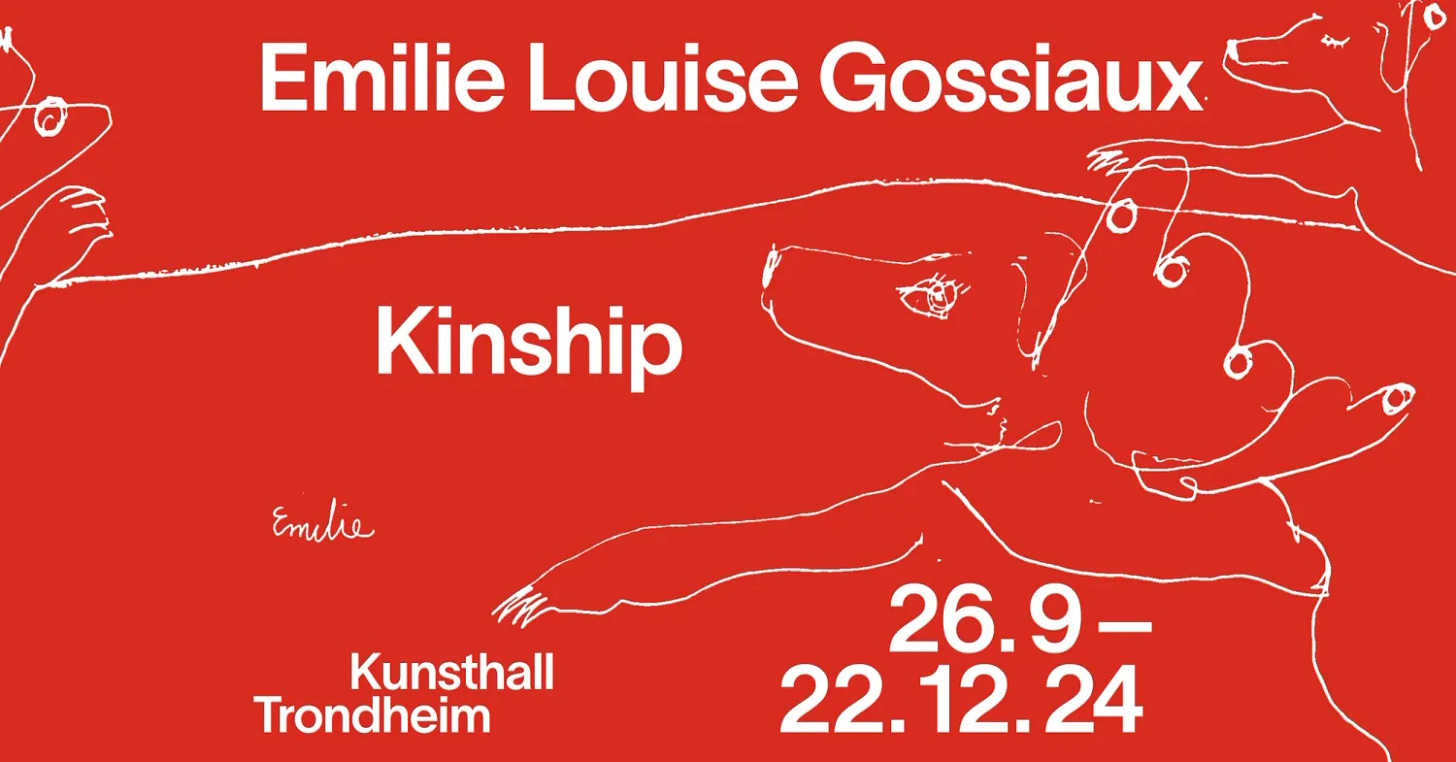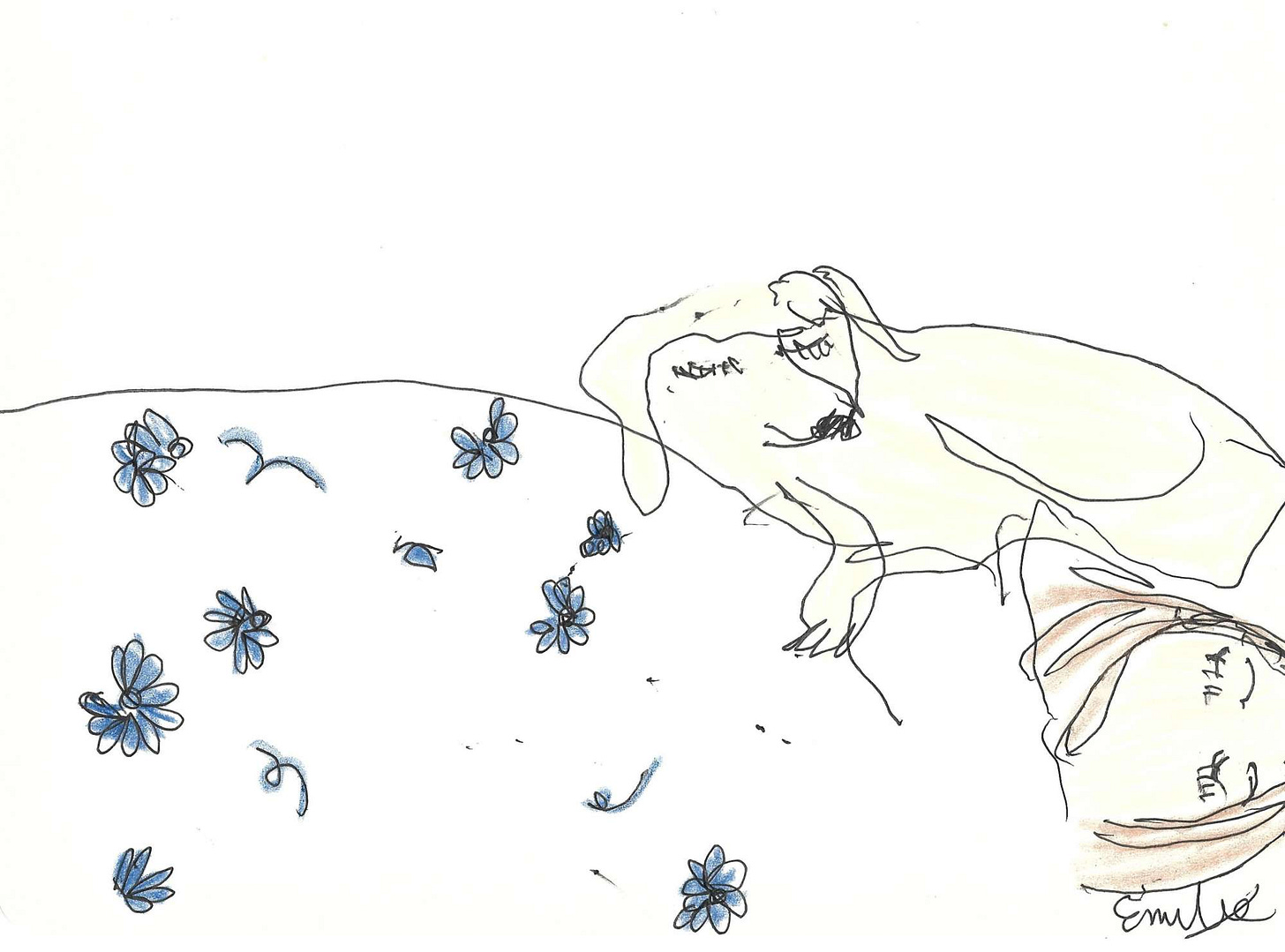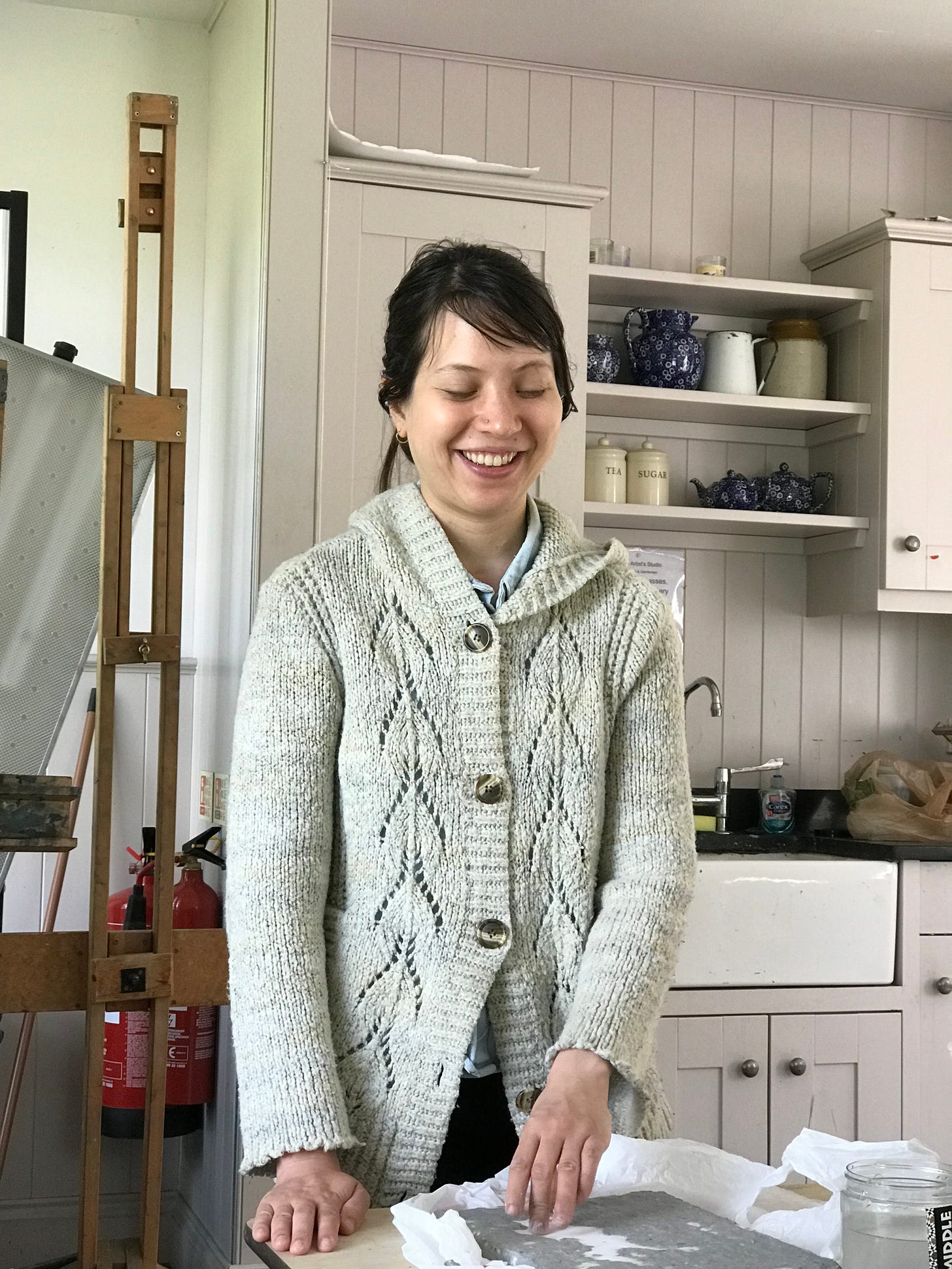A Minute With Emilie Gossiaux
I saw Emilie’s work from the great, and past guest, Harley Wertheimer posting on IG. There were some drawings of dogs and maybe it was because we have a new-ish puppy but I loved them and wanted to find out more. Timing was great because Emilie’s show opens today at Kunsthall Trondheim in Norway and I got to ask Emilie about her work and life. Thank you so much Emilie for your time.
Congrats on your upcoming show. How long have you been working on this for ?
EG: Thank you!
I had a studio visit with Adam, (the director of Kunsthall Trondheim), while I was a Jerome fellow at the Queens Museum, where I was an artist in residence for a full year from 2022-2023. I was already in the thick of working on my solo show, “Other-Worlding” at the Queens Museum, and after that first studio visit, Adam and I immediately started planning my show for Kunsthall Trondheim. I already had a group of ceramic sculptures I was just finishing up in my studio that I wanted to show with them, and had ideas for a new installation that I would start after my residency.
Besides only a few sculptures and drawings, all of the work included in Kinships are from 2023 and 2024. My sculptures for my installation, “Kong Play” got finished a week before it was shipped out this summer. That piece took me about 7 months to complete.
I was thinking of your upcoming show “kinships” - and is there a link between all 3 shows?
EG: I have drawings and ceramic sculptures on view right now at NADA House on Governor’s Island with Golestani Gallery, that are related to the same work that I have in “Kinships” in Trondheim, but my solo show, “Nature from Bed” at Wave Hill in the Bronx is a new group of drawings that I made this spring. The drawings there are about how I am able to experience nature as a disabled person, which is through my dreams, my sense of touch, and visual memories. In 2021, I was an artist in residence at Wave Hill’s Winter Workspace, and I opted for the remote residency because it was still during the early stage of the covid-19 pandemic. The assistant curator at Wave Hill, Jesse Firestone and I would meet on Zoom once a week, and he would verbally describe the beautiful botanical gardens and grounds there. Some of my drawings included in the show were drawn from those recordings.
Other drawings in the show are based off of my dreams— I grew up in a sort of suburban rural area outside of New Orleans, and I would often see a lot of snakes, alligators, and small forest creatures. I’m not sure why, but they frequently visit me in my dreams at night, and so I translated Those dreams into drawings.
I feel that I am also able to experience nature through my close connection with my Guide dog, who is named London, so some of the drawings in the show are of her, or us together. I feel as though she has opened up my world to understanding nature and animals.
Is there a specific theme that you focused on?
EG: For Kinships, I focused on my interspecies relationship with London, and imagining what it’s like to be a dog, to share the same desires and experiences with her.
London and I have been together for 11 years, and she has made a profound impact on my life, not just giving me greater independence when I travel, but also as my closest companion. Until she retired from her Guide dog duties 2 years ago, she’s been with me by my side almost everywhere. To lose that part of our life together has been difficult, and I feel like I have been grieving that loss ever since, even though she is still with me now. Kinships is a celebration of our relationship, our otherness, and finding love with a non-human animal.
Do you have a strict or more casual approach to making new work?
EG: Recently, I have been working on ceramic sculptures that I’ve been wanting to make for a while. When I start working on a new sculpture or drawing, more ideas evolve from there, and so I follow the flow. I feel like I can’t start anything new unless I finish this stream of ideas until they’re done. Then I’ll revisit a theme I’ve explored before and take it from there. I’m not sure if that’s strict or casual, but that is how I’ve been working in my studio recently, and I’m really enjoying working consistently every day at this pace.
What is currently inspiring you ?
EG: London is 14 years old now, and so I’ve been thinking a lot about the idea of death, mortality, and afterlife. Reading memoirs and texts by Crip writers has been inspiring me too. Right now I am reading . Feminist, Queer, Crip by Alison Kafer, and Sunaura Taylor’s Disabled Ecologies: Lessons From A Wounded Desert.
Do you have any other shows this year ?
EG: My work on Governor’s Island with Golestani Gallery is up for another month until October 26th, and my show, “Nature from Bed” at Wave Hill in the Bronx opened earlier this month, and will be on view until January 5, 2025.
Next month, on October 16th, the curator, and director of Kunsthall Trondheim and I will give a short artist talk about my work in Kinships at Canal Projects in Manhattan. More details to come from that, but it will be a fun celebration for us with refreshments and a carasel of images of the show will be on display too.
What’s the biggest takeaway, you’d like people to learn about your work? If there is just one thing..
EG: I think a recurring theme throughout my work has been the idea of interdependence. How we, as humans are entangled with nature and the animal world, and how as a society we need to have empathy for each other, including with non-human species.
Are there certain museums or galleries that are being more inclusive to someone with a disability ?
EG: Almost every museum in New York City has an Accessibility department, but I go for the ones that have programs for people who are blind or partially sighted, like touch tours and verbal description tours. My favorites are The Whitney Museum, MoMA, and The Met, whose directors are all legally blind too.
The Whitney did a touch tour about a month ago for the Biennial show. It was so fun and great because 2 Crip artists that I admire, Constantina Zavitsanos and Carolyn Lazard were also there talking about their work and answering questions from the audience.
The MoMA has a great monthly online virtual program called Disability Art Chats, where they talk to a contemporary Crip artist or performer about their work. On October 10th they’ll be with the artist and writer, Johanna Hedva, for example.
But inclusivity in the art world goes beyond making accessible programs for disabled people, it also means museums need to hire curators, program organizers, and educators who are disabled, and show work by disabled artists too. Last year, I read exciting news that SFMoMA acquired over 100 works of art created by artists with disabilities who live in the Bay area. They’re now the home of one of the largest collection of art made by artist with disabilities. A historic moment for a group that has been unrecognized by the art world.
Here is a link that has the announcement from SFMoMA’s website
** Make sure and check out our interview with Creative Growth!!






